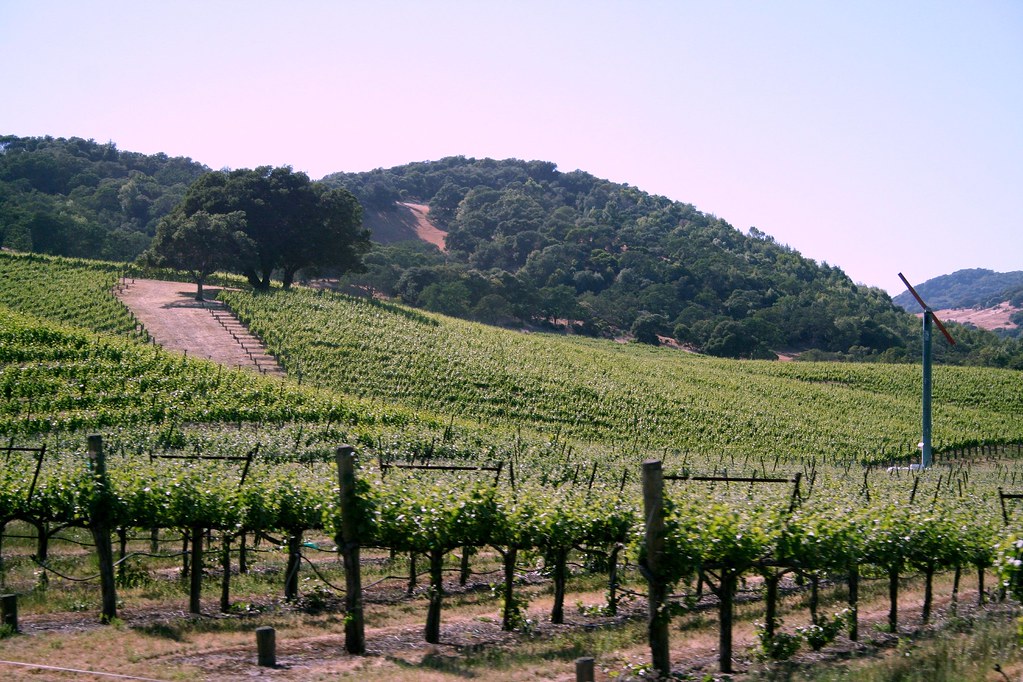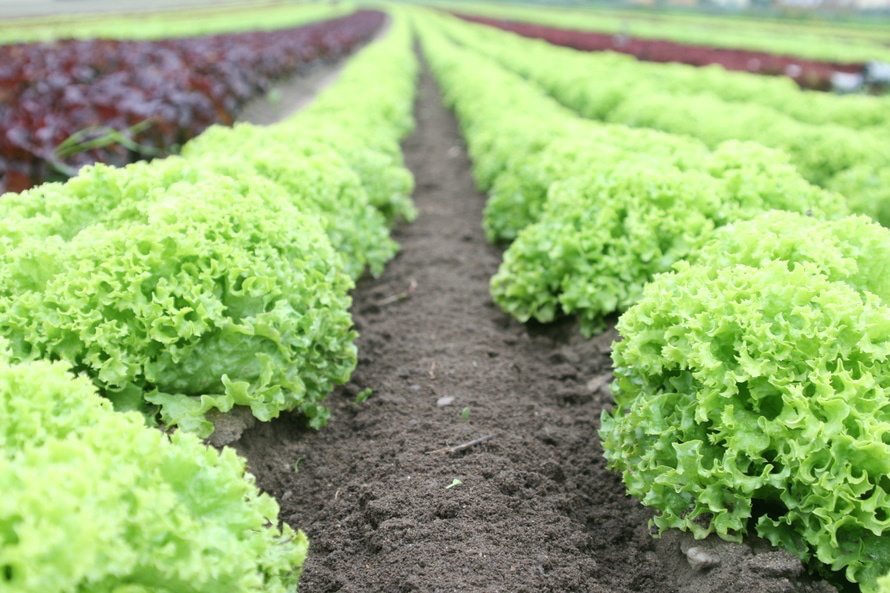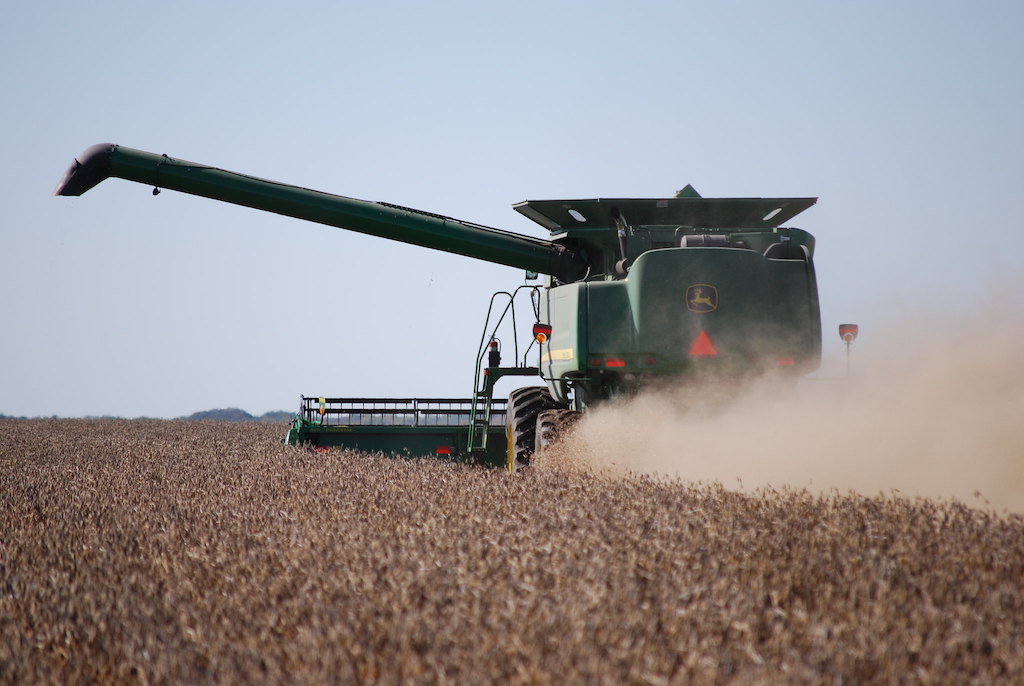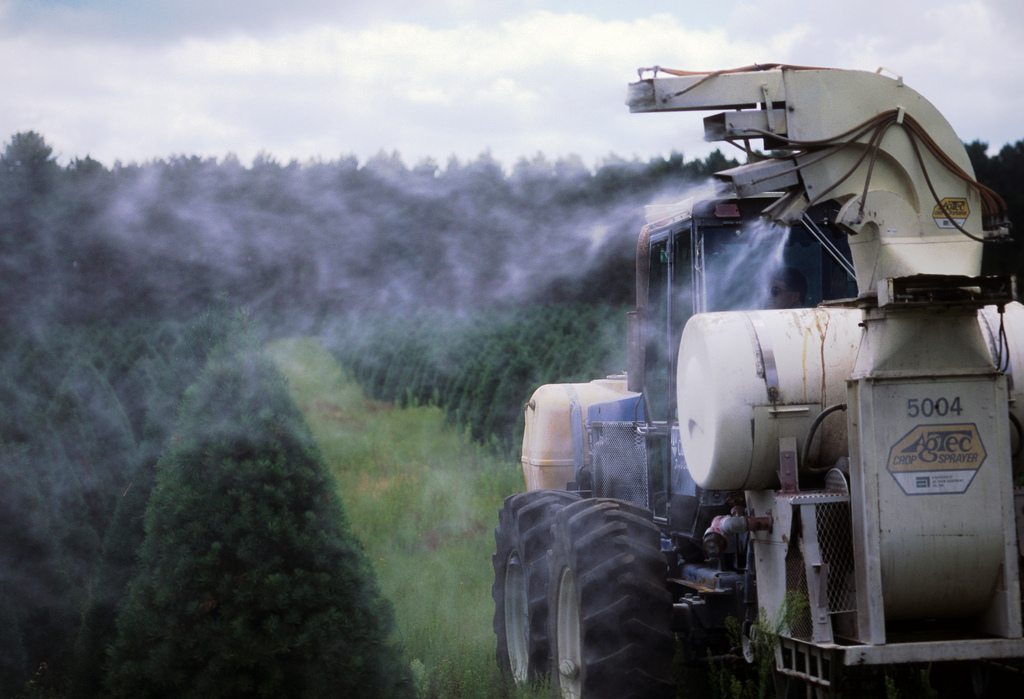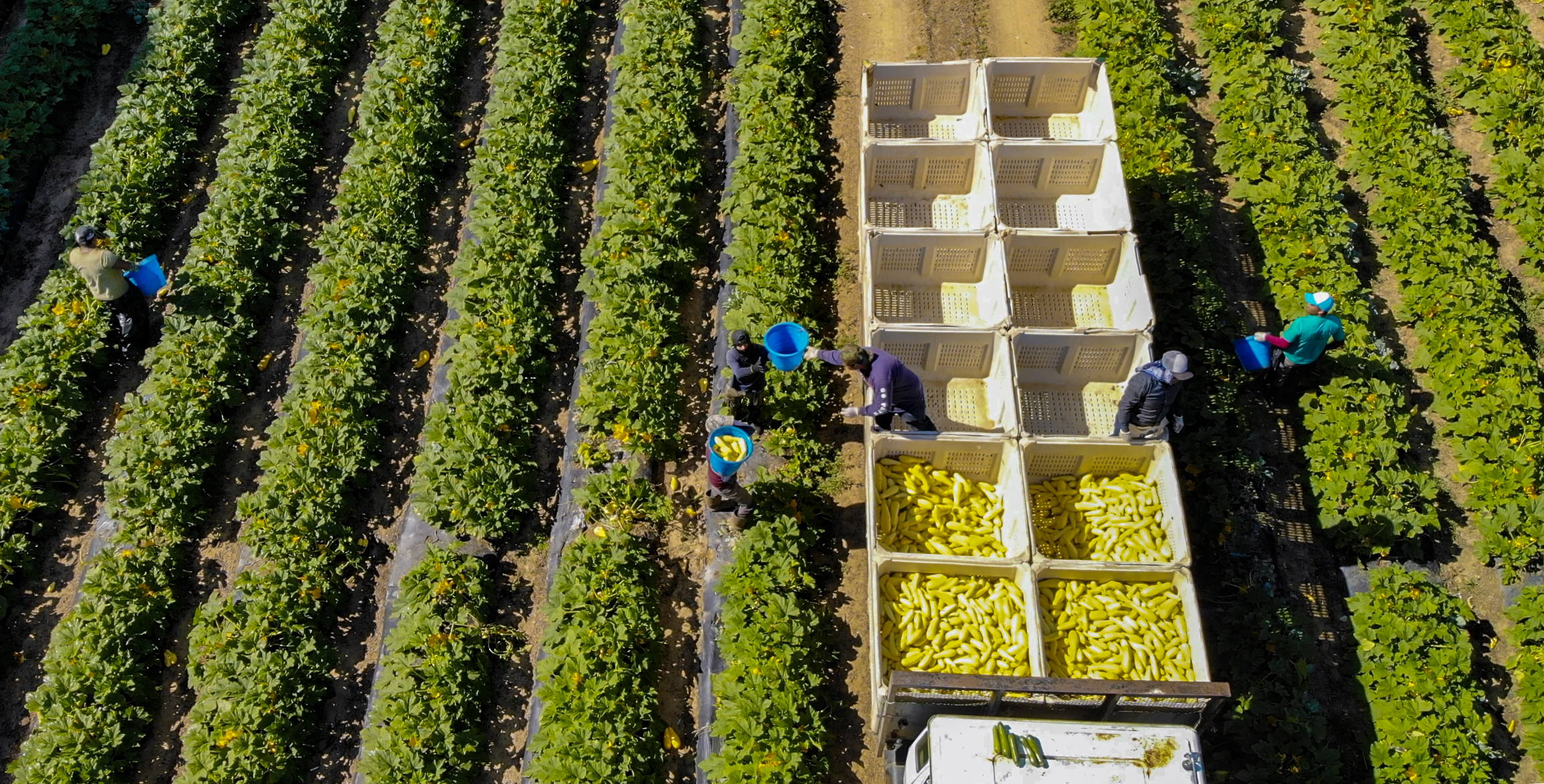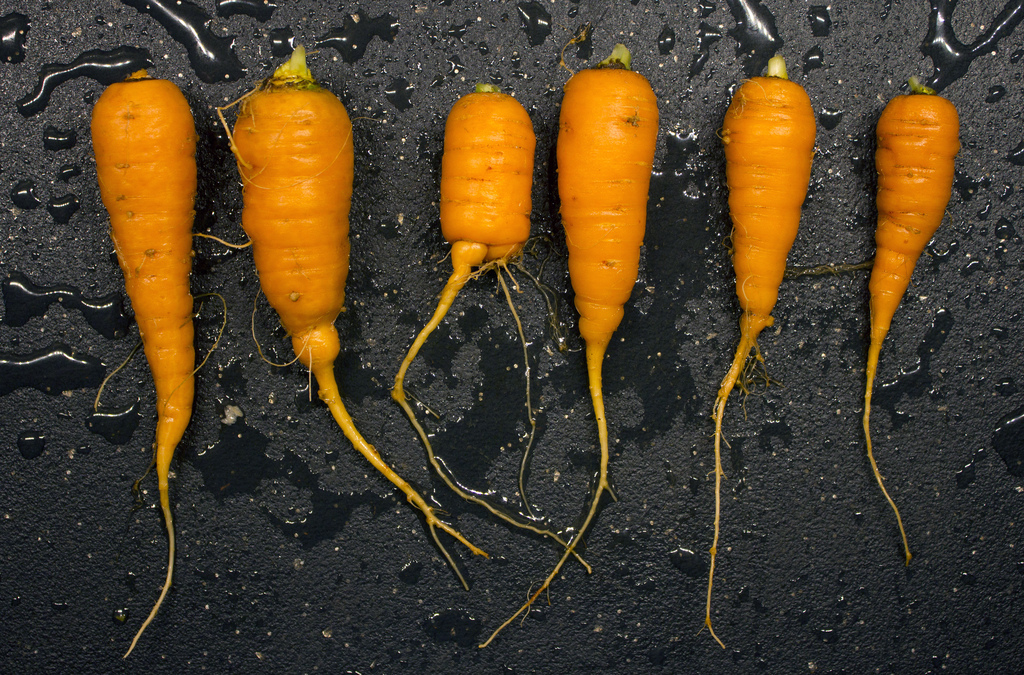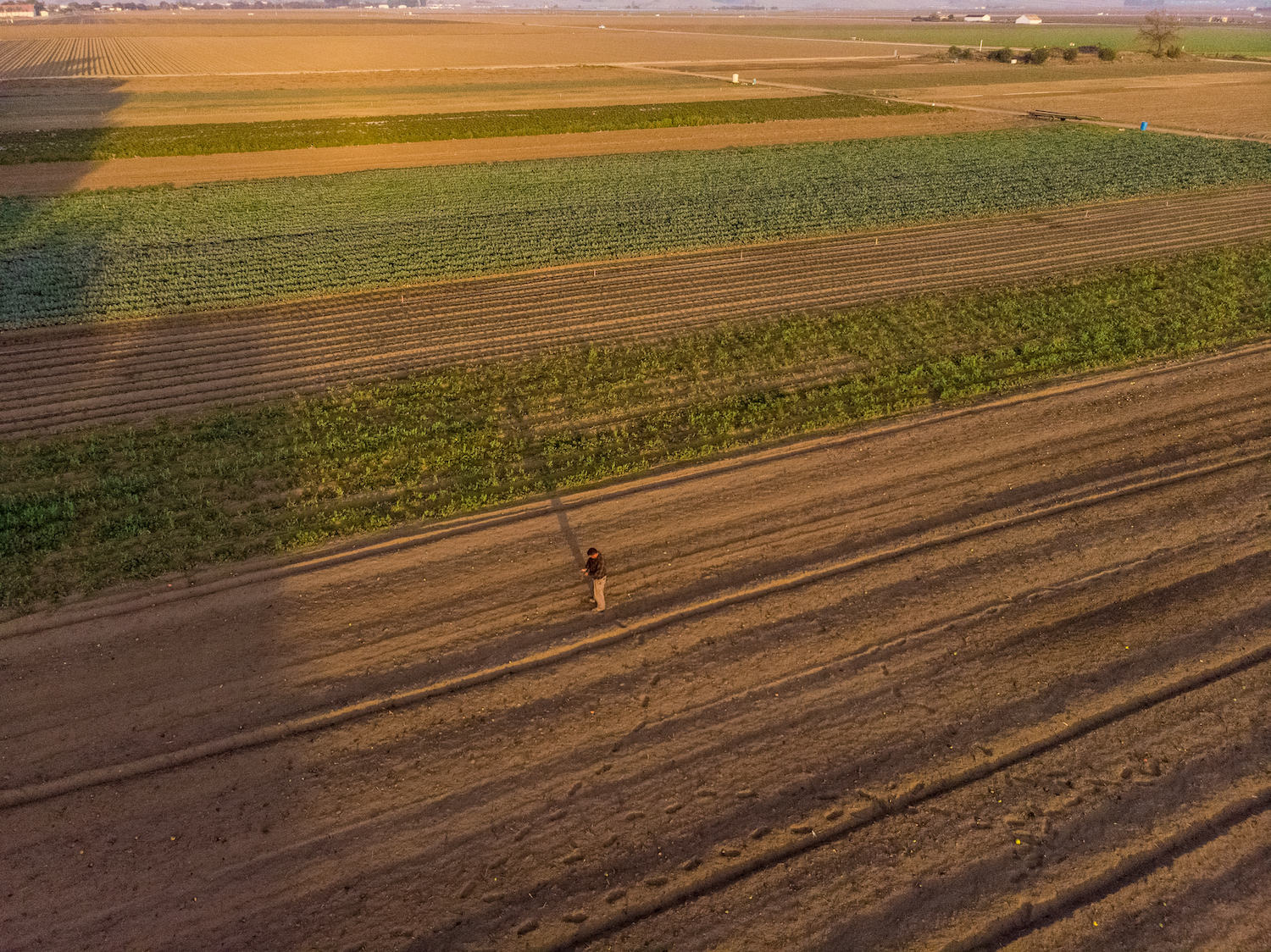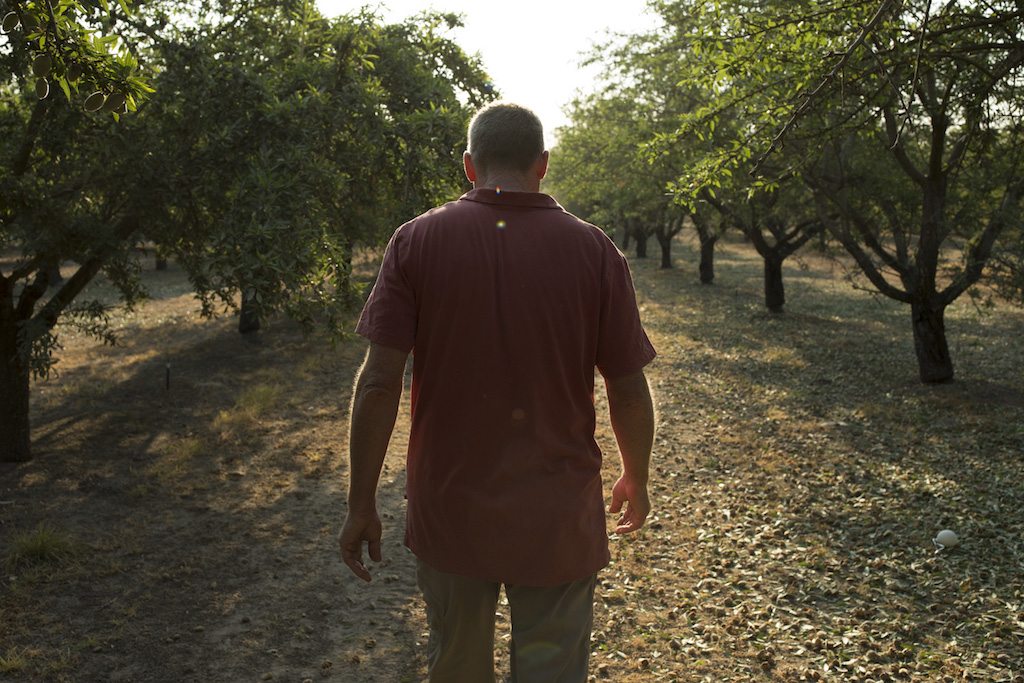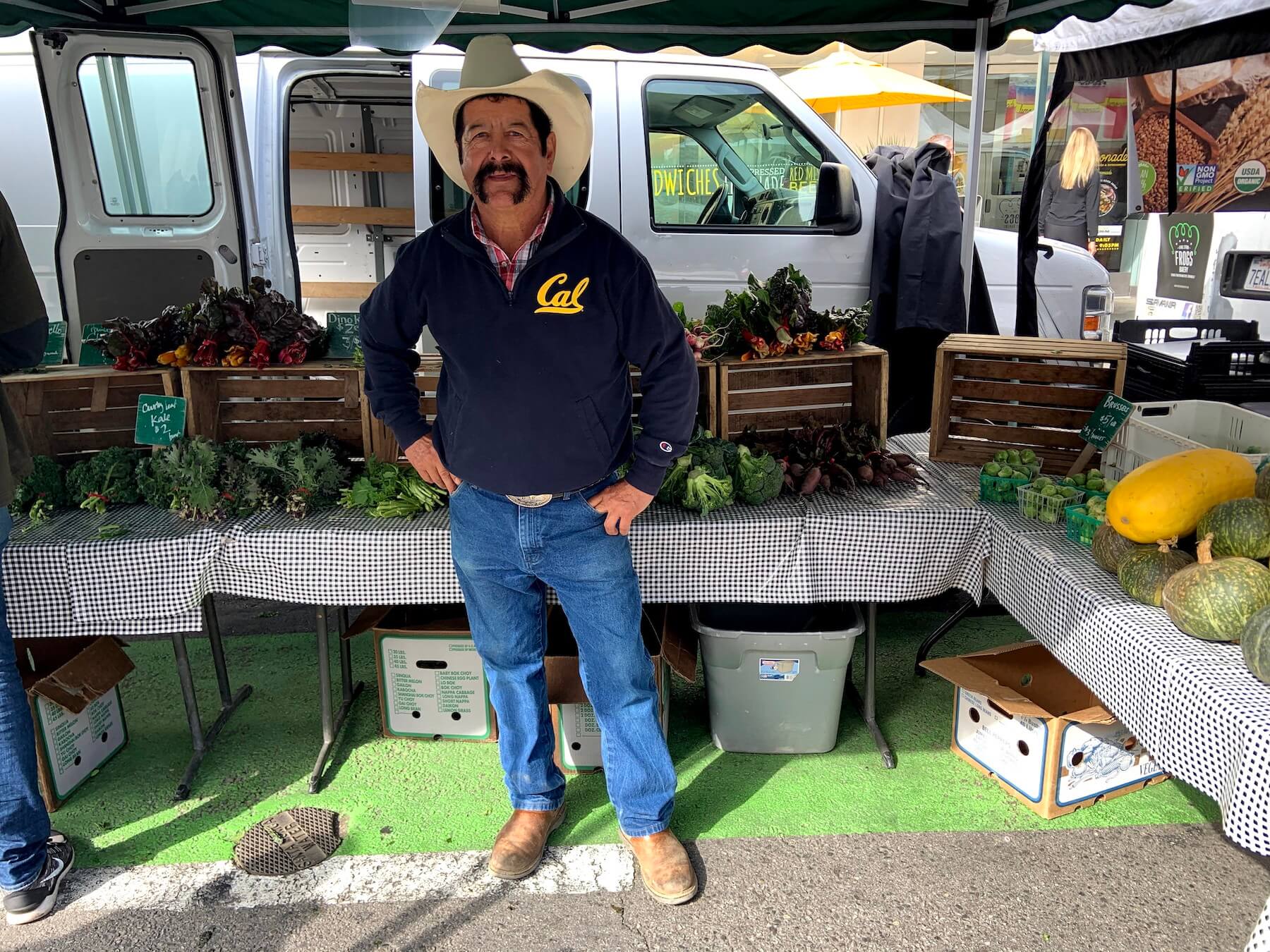
Mackie Jimbo
Primary season often puts the focus on commodity crops, global markets, and international trade agreements. But 90 percent of our produce is grown in California. So we asked 20 smaller farmers in the Golden State to tell us what’s on their minds today.
For months, the presidential caucuses have had the American electorate focused on Iowa—the middle of the Midwestern farm belt, home to hog producers and commodity crops like soybeans and corn, the place where candidates take root or fail to thrive. But 90 percent of the produce we eat comes from the California farm belt, which stretches in a loop from south to north, along the coast and back down through inland fields.
There are over 70,000 farms in California, and almost three-quarters of them are defined as “family farms”—as many as 95 percent, according to the California Department of Food and Agriculture, which includes family partnerships in its number. The farms, smaller than 100 acres, belong to farmers whose average age is 59.2. That’s one thing California has in common with Iowa: it’s heavily populated by small farms run by families that are looking, often in vain, for a next generation to step up.
It’s a year-round operation, but, because of the climate crisis, it’s in jeopardy as never before. Farmers scramble to combat the usual threats—drought and its step-sibling, fire—as well as an increasingly unpredictable forecast, one that requires them to change their planting and harvest schedules on the fly, and, sometimes, the very crops they plant. If they do get a crop to harvest successfully, they often can’t find enough people to help them get it to market. Would-be retirees are instead working their fields.
The traditional business model isn’t any more reliable than the forecast. Many small farmers have abandoned retail sales in favor of farmers’ markets and restaurants, because they simply can’t afford to let a distributor siphon off any of their profits. Much of California’s small-farmer bounty never crosses state lines; that’s the province of big commercial growers who often contract with consortiums of small farmers to fill their nationwide—and international—orders.
One Fresno farmer was part of a small lobbying group that recently traveled to Washington. D.C., where a congressman marveled that he’d never seen a group like this. Usually farm lobbyists represented big growers with global customers. They want to talk about tariff policy; independent California farmers want to talk about small loans to improve growing practices.
Their perspective on farming—whether it’s the impact of the climate crisis, or restrictive immigration policies, or any other debate-stage issue—is not always in sync with the national conversation, because they’re looking at farming from a different angle.
They want support for an increasingly endangered species: the people who put fruits and vegetables on our plates.
The Counter thought they ought to have more of a voice during a week when we’ll be hearing an awful lot about the politics of Midwestern producers, so we visited the Santa Monica and Hollywood farmers’ markets in Southern California, two of the oldest and largest markets in the state, to find out what’s on farmers’ minds.
—Karen Stabiner, West Coast editor
(These comments are condensed from longer conversations.)
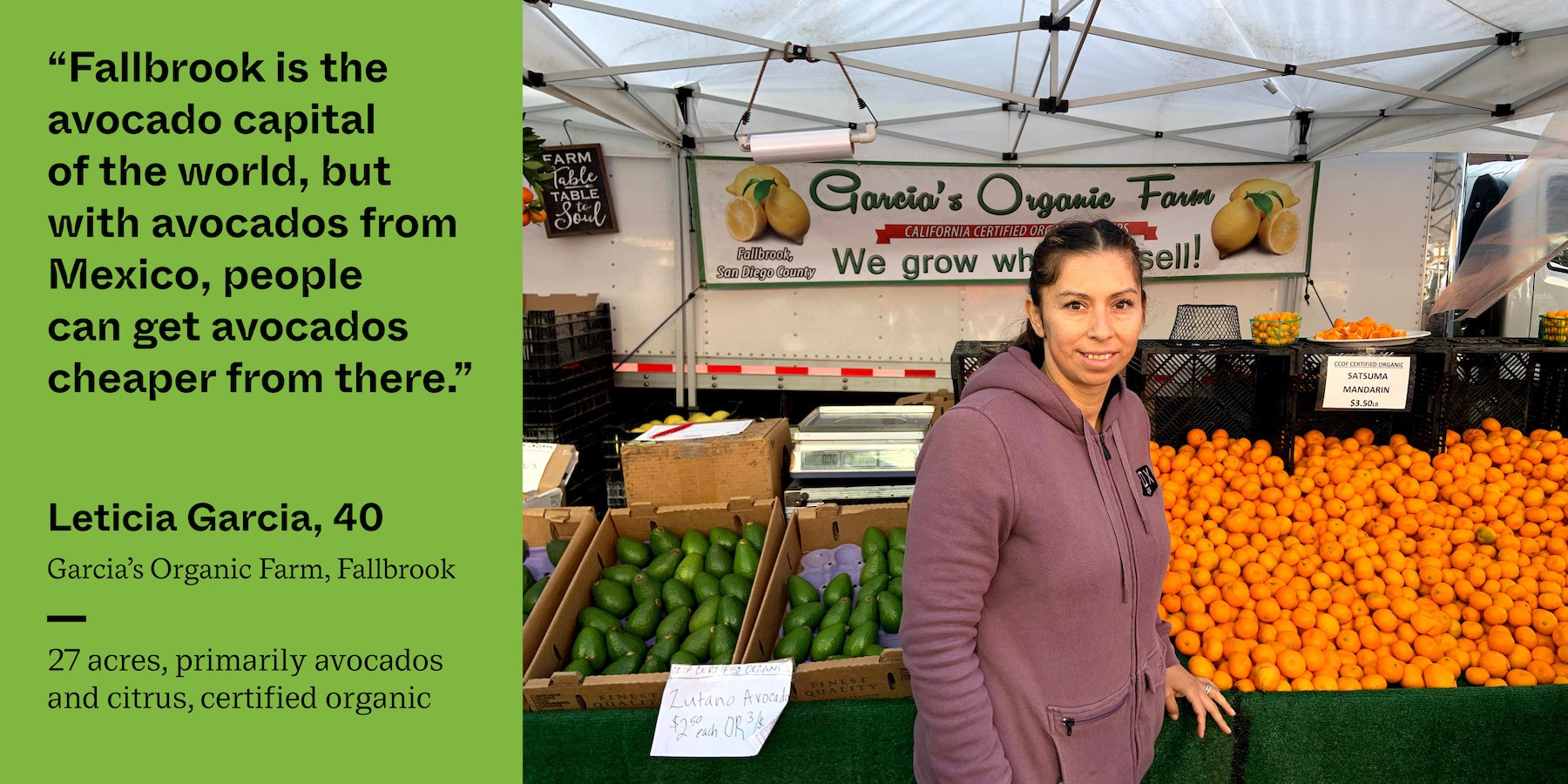
Photo by Mackie Jimbo
Leticia Garcia, 40
Garcia’s Organic Farm, Fallbrook, California
- Garcia’s Organic Farm operates 27 acres, primarily avocados and citrus, certified organic.
- The farm has been organic for nearly 30 years, and 95 percent of its sales are through the Santa Monica farmers’ markets.
“My father-in-law bought the farm back in 1989. Back then, there was not a lot of organic growers in Fallbrook. So he thought, ‘I’m going to give organic a try.’ He started the organic certification, and it started paying off really well. It was worth that hard extra step.
“Fallbrook is the avocado capital of the world, but with avocados from Mexico, people can get avocados cheaper from there. We have higher prices, but other people are not organic. And avocados take a lot of water. If they’re on well water, that’s perfect. But if they’re on city water, they’re probably not making any profit.
“We’ve had two Junes in a row where temperatures hit triple digits and we had big heat damage. The Meyer lemons softened up, finger limes dropped to the floor, baby tiny avocados all dropped to the floor. We were able to bring Persian mulberries one week and the next week they were all fried on the floor. And about eight years ago, about 65 to 70 percent of our farm froze. There’s nothing we can do to prevent heat damage. But watering can prevent freeze damage.
“Fallbrook is the avocado capital of the world, but with avocados from Mexico, people can get avocados cheaper from there.”
“The main issue for citrus is a disease called psyllid. It damages the tree, and in seven years or so, the fruit will turn sour. All citrus growers are very concerned and everybody’s monitoring for the disease. It would be devastating for us. Right now, all we can do is monitor. If we weren’t organic, we could probably spray.
If you go on a farm and see what happens on a daily basis—like on a rainy day, how hard it is to still pick and provide workers’ families with food. People think farming is a piece of cake, and it’s not. We can never control Mother Nature.”
Kong Thao
Thao Family Farm, Fresno, California
- Thao Family Farms operates 30 acres of 300 seasonal crops, primarily Asian greens.
- No sprays or pesticides; nitrogen fertilizer.
Thao’s parents started farming over 30 years ago. The family, ethnic Hmong, immigrated to the US from Thailand in 1988.
“Our problems or issues are just like any small business. Labor is a hard one: Most people don’t want to be farmers, don’t want to do farm-labor type work; it’s just so hard. In our area marijuana is one of the big things now, so we’re competing with marijuana growers, obviously those guys are more of a cash business, they’re paying more.
“As people get more educated or find other jobs—this is one of those jobs that’s a tough one. As the years go a lot of people don’t want to do it. A lot of the labor we get is Hmong people, like my parents, so they could communicate and things like that. All my siblings are involved, so we just absorb more of the labor whenever we have to, whenever we don’t get as much help. It’s a family thing.
“I went to Washington, D.C. with a group of small farmers. I introduced myself to one of the congressmen who said, ‘Man, we’ve never had anybody like you out here.’ The guys who lobby are just all the big, big places.”
“If you’re a small farm and you’re growing for a big wholesaler, the pricing on it fluctuates and a lot of times you can’t make up your labor costs, if something went wrong with the crop. But we’re at the farmers’ markets (and selling to restaurants). It’s not easier, but if we have to pay more for labor we can charge a little more. A lot of the customers, since we’ve been here as long as we have, we sell personally to customers: when we have to raise prices on something, they understand it.
I went to Washington, D.C., with a group of small farmers and introduced myself to one of the congressmen, who said, ‘Man, we’ve never had anybody like you out here.’ The guys who lobby are just all the big, big places, and we’re a tiny little farm on 25 acres. The guys who go there are the almond growers—not 25- acres-of-farmland people. We’re feeding a little community. We’re asking for things in the farm bill that would be loans and stuff like that, more toward the small family farm versus giving all that money to Big Ag. Tariffs are a completely different scale from what we do.”
Alex Weiser, 55
Weiser Family Farms, Bakersfield and Tehachapi, California
- Weiser Family Farms operates 160 acres of root and seasonal vegetables, using biological pesticides, sprays, or fertilizers as needed.
Weiser Family Farms started in 1977, with Alex Weiser leading the farm’s operations in 1988. The farm sells to retail grocery stores, restaurants, and farmers’ markets.
“We were certified organic for years, but we are not certified now. I get why people want certified organic, especially when it comes to retail because you don’t know where your food is coming from. But there are so many certifications: sustainable organic, unsustainable organic, biodynamic. I’m sick of everybody trying to label things. I’m Weiser Family Farms—I’d rather say this is who I am.
“Accessibility is important to me—when I have to certify, my food costs more and that prices people out of eating my food. If we educated people on what it means to be organic or made certain practices illegal totally, then we’d play on an even playing field.
“If we educated people on what it means to be organic or made certain practices illegal totally, then we’d play on an even playing field.”
“Labor shortage is an issue, with tougher immigration laws, less people wanting to do the work, mechanization, and laws that benefit bigger farms—like you can’t bend over to pick something. I can’t buy a million-dollar machine to pick. We need immigration policies loosened so that more people can come in and work.
“In Tehachapi, there’s weather swings and warmer summers. I’m planting earlier and earlier, challenging the edges more and more. I’m growing heat-tolerant varietals—things that don’t burn come in faster, and have better leaf coverage, like peppers.
“With the Tehachapi Grain Project, we are trying to grow grain again in Southern California. Instead of monoculture systems, small farms used to grow grain in the winter. But after World War II, everything became monoculture, and grain became something you grow in the Midwest and became GMO. Small farms usually don’t grow grain because they don’t have the infrastructure for harvesting, cleaning, or getting grain to market.”
John Chester, 48
Apricot Lane Farms, Moorpark, California
- Apricot Lane Farms operates on 214 acres, producing meat, eggs, and a range of crops that include stone fruit, citrus, and avocados.
- Certified biodynamic and organic.
Chester and his wife, first-generation farmers, started Apricot Lane Farms in 2011. The farm follows regenerative farming principles.
“Regenerative farming looks at the farm as an ecosystem that needs to be farmed in a way that regenerates the biodiversity of the farm and the health and diversity of the soil system. It is the opposite of an industrial mono-crop operation, whose methods are extractive in nature.
“I would shift subsidies away from farming methods that are extractive and not regenerative in nature. We have to incentivize farmers to grow cover crops and experiment with regenerative methods. We spent $20 billion a year subsidizing about 39 percent of farming practices in the U.S.—about 99 percent of which are industrial operations that degrade healthy soil systems. We are subsidizing on an annual basis the destruction and loss of $40 billion in topsoil in this country alone, every year.
“I would shift subsidies away from farming methods that are extractive and not regenerative in nature. We are subsidizing on an annual basis the destruction and loss of $40 billion in topsoil in this country alone, every year.”
“I don’t necessarily think certification is as important as the methods. The method should be restorative or regenerative to the land. The label is just an indication to your consumer that you believe in certain ideals. I’m not saying they are irrelevant—I would support any farm, regardless of certification, if they looked at working their land as farming finite natural resources that must be renewed in order to continue farming: healthy topsoil, water, and biodiversity that helps buffer the entire farm system against epidemics.
In Ventura County, we’ve been required to reduce our water allocations by 25 percent after the last big drought. At Apricot Lane, we sequestered 140 million gallons of water after a 24-inch rain event last year. I don’t know many other farms that can say they sequestered water back into the aquifer. And we use 10-35 percent under our allocation. We’re able to do that through growing cover crops and increasing soil organic matter levels on our property.”
Bill Spencer, 73
Windrose Farm, Paso Robles, California
- Operates 70 acres that include apples, stone fruit, root vegetables, heirloom tomatoes, greens, and herbs.
- Biodynamic and organic farming practices, but not certified currently.
Spencer and his wife, Barbara, started Windrose Farm in 1991. Now in their 70’s, they are struggling to find a young farmer to continue the farm’s legacy.
“Windrose strives for the four e’s: environmentally, economically, emotionally, equitably sustainable. We’ve been organic since we started, and certified off and on with [California Certified Organic Farmers]. We also use biodynamic principles but are not certified biodynamic. There are 12 USDA employees that enforce the entire national certified organic program. I was in Hawaii for a wedding, and counted 12 USDA inspectors at a tiny airport. The irony is that’s more than 100 percent of the staff for the entire USDA certified organic program in one tiny airport. There’s virtually no integrity in the organic program.
“We’ve never made money, we’ve lost money. We invested our savings and my inheritance into owning a farm.”
“We’ve been trying to get the farm leased into new, young hands without selling it. My wife and I are in our 70s, and we need time together and want to retire. The tragedy for young farmers is they can’t afford the land and have to rent. And when you rent land, you can only do annual crops and can’t plant trees. Our goal is to create a non-profit entity to continue sustainable farming and training of farmers, so more land can be leased long-term to young farmers to grow food locally.
Windrose is a complex farm, and it will be time-consuming to get the farm into new hands so that it is profitable. We are a standalone, paid-for farm that is not able to make money due to degrading of our farm’s age and cash flow. The average person in this country doesn’t have resources to buy the food that we produce. The irony is while we are trying get better food available to more people, only a few can afford it at a price where we can break even, because it’s expensive to have labor and grow things correctly.
“We’ve never made money, we’ve lost money. We invested our savings and my inheritance into owning a farm.”
Oliver Edward Woolley, 37
Peads & Barnetts, Valley Center and Mariposa, California
- Operates 400 acres, Berkshire pigs, citrus, rare Australian and South African flowers and foliage.
- Certified organic.
Woolley’s family has raised Berkshire pigs in England since the late 1950s. After a brief stint in Colorado as a supplier to Niman Ranch, Woolley and his father opened their farm in California in 2003.
“For small meat producers, the biggest problem is the processing side. There’s no small slaughter plants and processing facilities left in this country. Almost all of them are owned by the big commodity producers who don’t allow anyone else to slaughter or process there. The closest slaughter plant to our farm is seven hours away. We’re in the most populous state, and yet there’s nowhere for us to process meat.
“For small meat producers, the biggest problem is the processing side. There’s no small slaughter plants and processing facilities left in this country. Almost all of them are owned by the big commodity producers who don’t allow anyone else to slaughter or process there.”
“Pig farmers in the Midwest who supplied pork to China have different exposure than us. Right now, price has gone to hell because they increased production to meet demand—and then demand trails off and there’s too much supply, and they go out of business. This happens over and over again in our industry. We have none of that exposure because we supply directly to restaurants, high-end retail stores, and farmers’ markets.
“We tripled in size in the last five years, because people are paying more attention to what they eat. They’re not buying meat in the grocery store as much because they have no idea what that animal’s fed or how it’s raised. We can tell you exactly what we do. At the same time, people are eating less meat—and they should eat less meat. I’m a meat producer and I say that. I firmly believe that people should eat less meat, but better quality and consciously sourced. It’s better for the environment, our own health, everything. Maybe not for the huge companies, but that’s fine. The big industry players are at risk because they are slow to change. It’s a huge opportunity for small producers.
“We’ve been in a drought in San Diego County for seven out of the last 10 years. We have our own wells that we irrigate from, but the wells can run dry and then we have to start using city or county water, which is expensive and drives our prices up. Citrus is almost impossible to make a profit on because of the cost of water.
“We got smart with the way we irrigate. We make sure the water goes directly on the root system of the trees and the flower plants. We use sensors all over our farm to measure the moisture content of the ground.”
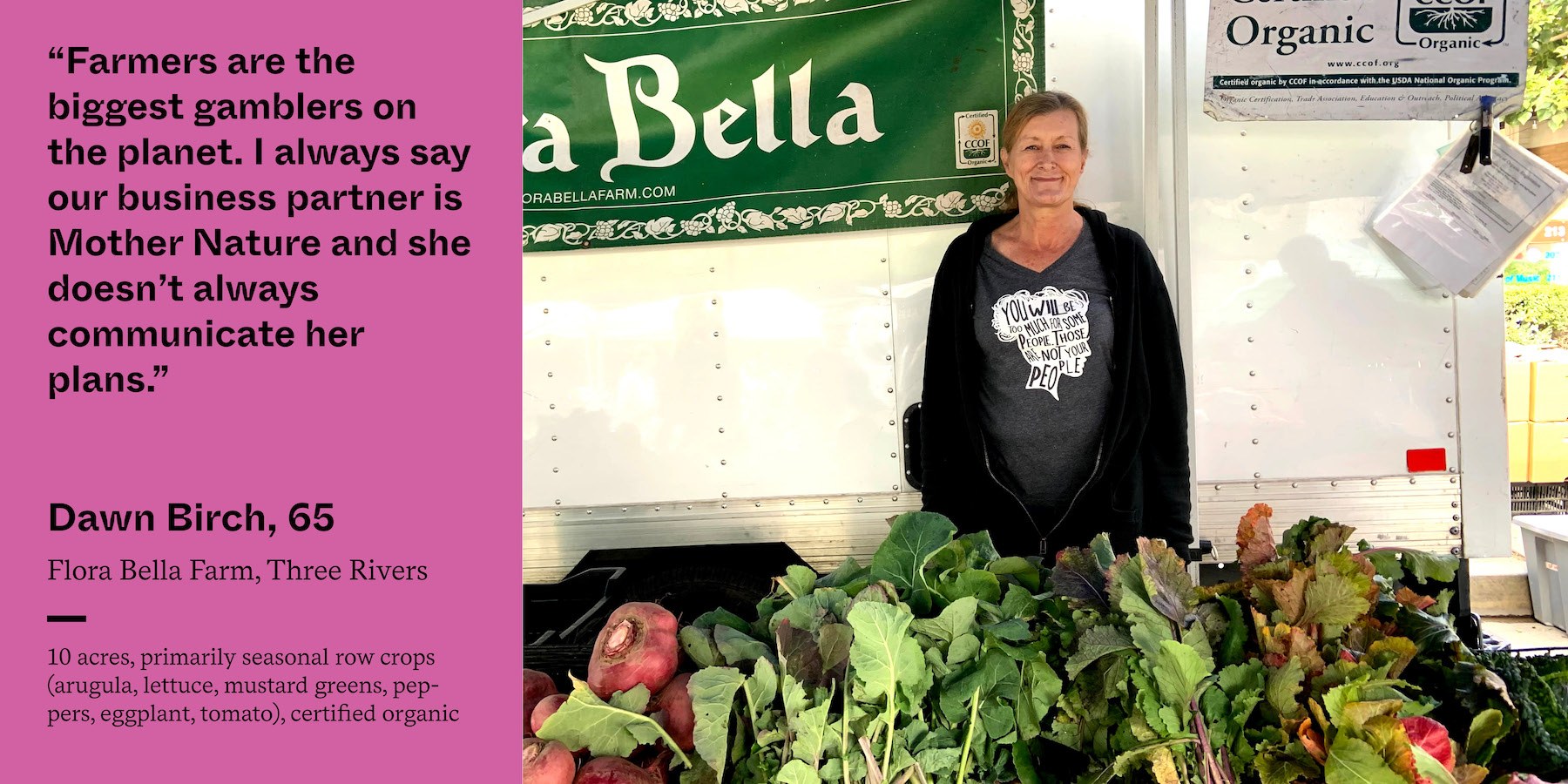
Photo by Mackie Jimbo
Dawn Birch, 65
Flora Bella Farm, Three Rivers, California
- Operates 10 acres, primarily seasonal row crops (arugula, lettuce, mustard greens, peppers, eggplant, tomato).
- Certified organic.
James Birch, Dawn’s husband, started Flora Bella Farm 30 years ago as certified organic. They plan to continue operating the farm, even though they are past retirement age.
“It wasn’t a decision to go organic. We don’t eat poison. We don’t eat chemicals. if we’re not going to eat it ourselves we’re certainly not going to grow it and sell it to people.
“Our biggest concern is global warming. Our water source is the snowpack off the Sierra Nevada, but we experienced six years of severe drought, where we’d go for 10 to 12 weeks with no water. My husband would go out every three hours and move the hose to a different line, and he did that throughout the six years. The orchards were so stressed in the end that we pulled them out. This year, the snow doesn’t look like it’s coming, but we’ve cut our water usage by about 60 percent because we farm very differently than we used to.
“We’ve stopped overhead watering. Everything is grown in raised beds with plastic over them. Underneath the plastic are two drip water lines and we punch a hole in the plastic and put the little plant or the seed in there. There’s no evaporation. The plants aren’t fighting weeds because weeds can’t grow up under the plastic. We had to invest in very expensive sand filters to make the water clean so it didn’t plug the drip lines. But now, we can farm forever with less water.
“Farmers are the biggest gamblers on the planet. I always say our business partner is Mother Nature and she doesn’t always communicate her plans.”
“We can’t get new workers. We advertise and nobody applies for the job. A few weeks ago, my husband and I were out in the fields picking because we didn’t have enough people to pick. We pay well—we start at $12 an hour. And we just can’t get the people. It’s backbreaking, it might be 115 degrees in the summer. It might be icy in the winter, and the produce still needs to be taken care of. People from other countries are willing to do this. And we need to let them come and do it.
“Farmers are the biggest gamblers on the planet. I always say our business partner is Mother Nature and she doesn’t always communicate her plans.”
Miguel Loureiro, 41
Fair Hills Farms, Paso Robles, California
- Operates 47 acres of apples and stone fruit.
- Biodynamic certification in progress, uses regenerative farming practices.
Fair Hills Farms has been in the apple business for nearly 30 years. Loureiro and his uncle, who owns the farm, come from a long line of farmers in Portugal.
“Our farm was started from the get-go with the principle of selling direct to consumer, taking away with the middleman per se, you know, so you can buy farmer-direct at the farmers’ market. We get the most for our product, while the consumer gets the fruit with the most life force still in it and it’s not something that has been in storage now. We do ship to a few people on the East Coast, and in Singapore.
“We are in the process of becoming certified biodynamic, so we are one step above organic. We were organic for 17 years, and then the government starts putting their hands into things and they start changing what’s organic what’s non-organic. ‘A little poison is not bad,’ basically losing focus. So we’ve jumped out of that wagon into a cleaner wagon.
“You can be organic and your practice can be junk, almost like saying, ‘I’m vegan.’ Yeah? French fries are vegan.”
“We have a regenerative farm. When we are trimming our trees, for example, instead of making a pile, and sending it to the recycling or whatever—we leave it right where we trim it—then we come in with a shredder and we shred it right there into the ground. And the leftover fruit that comes off of the tree will fall into the ground and feed the tree itself.
“It’s localized—plus, your soil will be better, richer. It’s the next level, and you’re going to see more and more farms approaching the regenerative farming methods because it’s cleaner. I mean, you can be organic and your practice can be junk, almost like saying, ‘I’m vegan.’ Yeah? French fries are vegan.
The farmer that’s biodynamic, he’s not thinking about getting rich. He is thinking about doing a good job. We took drone footage of our orchard to see which areas were soaking water faster than other areas. When you have to pay attention: all this Big Ag became organic so quick, and there are lots of loopholes. You go into a piece of land that has used pesticides for 50 years? How about environmental toxicity? Doesn’t matter.
“None of the small farmers get any money. It’s all for the big-boys club.”
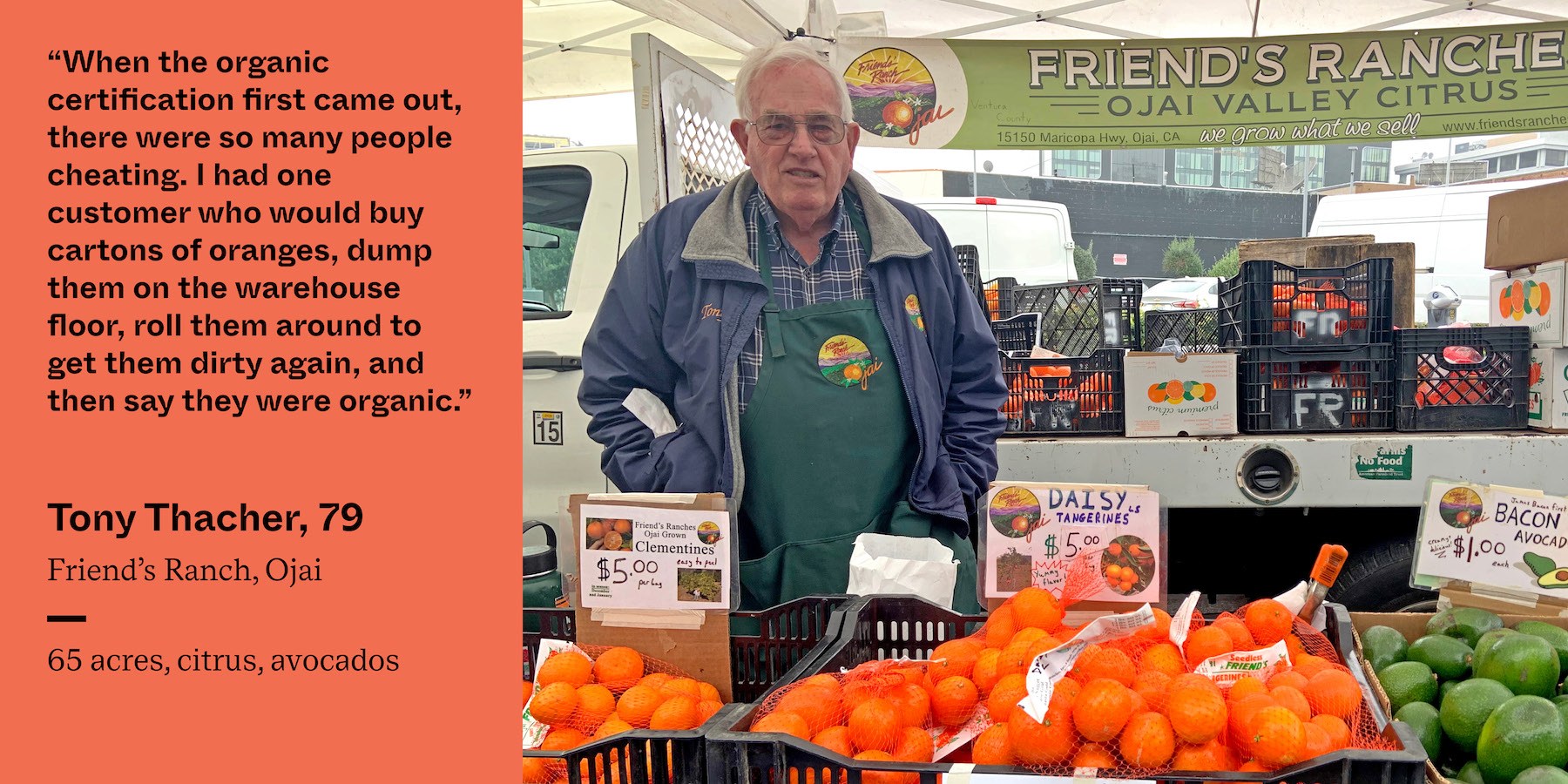
Photo by Mackie Jimbo
Tony Thacher, 79
Friend’s Ranch, Ojai, California
- Operates 65 acres of citrus and avocados.
- Uses conventional and organic sprays, and fertilizer.
Thacher’s wife’s family started Friend’s Ranch in the 1870s. Thacher took over operations in 1969; the majority of the ranch’s sales are wholesale.
“We lost 10 acres in the Thomas fire and some of it to drought. We actually took out some older trees, so that we could have enough water for the rest of the trees.
“The tariffs really hurt us. Last year, China slapped tariffs on California agricultural products. Oranges delivered to China went from $1 to $1.75. China took only about 52 percent of the oranges they had taken the previous decade. All that fruit came back in the domestic market, and citrus prices dropped. One of the curious things is that the wholesale price dropped precipitously, and the retail price dropped some but not a great deal. It leaves a lot of play for us to sell directly to the consumer, which has caused us to go to farmers’ markets and vertically integrate by making juice.
“I had one customer who would buy cartons of oranges, dump them on the warehouse floor, roll them around to get them dirty again, and then say they were organic.”
“There’s a disease called HLB or huanglongbing, which is a small sucking insect like an aphid that carries a bacterial disease. We’re mandated by the state to spray for that. When I came down here in 1970, we stopped spraying until two years ago when we had to spray for HLB. Technically, everybody including organic growers are supposed to spray for that. They can use organic sprays, which are ineffective and you have to use three times as often. We do two sprays a year on our citrus to keep the pests under control. HLB decimated Florida.
“When the organic certification first came out, there were so many people cheating. I had one customer who would buy cartons of oranges, dump them on the warehouse floor, roll them around to get them dirty again, and then say they were organic. I think it’s good for the public to know who their growers are, what practices they use, what they use for fertilizer, and why they use fertilizer.”
Meredith Bell, 38
Autonomy Farms, Bakersfield, California
- Operates 20 acres that include chickens, eggs, beef, lamb, and pigs.
Bell, a first-generation farmer, started Autonomy Farms in 2014. Though the initial focus was seasonal produce, Bell transitioned to meat and eggs because of chefs’ demand for those items.
“Chicken has become our signature product, about 65 percent of our sales. A couple of chefs fell in love with our chickens, and we had this little niche, no other competition in the market. As I looked at it from a financial standpoint it just made more sense. I finally said if this farm is going to be financially sustainable, chicken is going to be our path.
“I’d never farmed a day in my life before I started the farm, so I haven’t said no to anything yet. It’s more, okay, let’s try it and if it sticks then yes, and if it doesn’t, it doesn’t.
“When I first started the farm, it was very much my goal to get the organic certifications. And then the farm got flooded, and that was a huge hit for us because it was all street run-off. And why do I have to spend extra money and time and energy to have a label when it should be the opposite? We should be forcing farmers who spray chemicals to be transparent, and say, ‘Here’s the chemicals I put on my vegetables, here’s how they’re waxed, here’s how they’re processed, here’s how the cleaned.’
“For ranching, one of the biggest challenge is USDA livestock processing. We are all federally regulated which means we have to go through USDA facilities, and in Southern California, there were three. Now there are two. You don’t have any other options. I’ve talked to other ranchers about opening a facility, but from what I’ve heard it’s a $750,000 investment, and then dealing with all the regulations.
“Why do I have to spend extra money and time and energy to have a label when it should be the opposite? We should be forcing farmers who spray chemicals to be transparent.”
“There are other USDA facilities in Southern California, but we’re too small for them. A lot of the facilities, unless you’re bringing a truckload of cattle, they don’t want to deal with you. There should be something in place to help the small businesses to grow, a way to provide an environment that’s clean and safe but not have to have certain amount of equipment or whatever it is that these large packing plants have. California actually has something like that in effect for poultry.”
Alvaro Bautista, 47
Bautista Family Organic Date Ranch, Mecca, California
- Operates 20 acres of dates.
- Certified organic.
Bautista’s father bought the certified organic date farm 20 years ago. In addition to farmers’ markets, the family now sells their dates online.
“The weather is always a challenge. It changed a little bit this last year. We didn’t get as much heat that we wanted to, but overall, all farming’s based on the weather and it changes. I just hope it doesn’t change much because we have to get like 100 degrees and up for about a month or to 120 degrees. Dates love heat.
“When it’s colder it slows down a little bit, took longer for the dates to mature. We were behind maybe two weeks coming to the market, so the customers were a little anxious.
“We had funding help a few years ago with the drought, about three years ago. The government actually showed up to our house, and they helped us fill the paperwork and everything. It was great. They helped us manage the water and test the soil. And we had to irrigate.
“The farm’s changed for the best—what’s been good for the farm has been good for my whole family.”
“And most of the family helps us during the harvest and the pollination, we all get together and hopefully harvest the dates when they’re at their prime. We do most of the work, maybe hire one or two, so that’s not an issue for us. I think we’re doing good. My nephews are already helping us, my sister’s sons, and it looks like they’re liking it. Hopefully they’ll stay with it because it’s been good for my dad and for me.
“When we first got the farm, it was a farm. Now it’s like a ranch. We have animals. We have people visiting. We have tours. My brothers and sisters live there, too. The farm’s changed for the best—what’s been good for the farm has been good for my whole family.”
Steven Murray, 34
Murray Family Farms, Bakersfield, California
- Operates 300 acres of fruit crops that includes cherries, stone fruit, citrus, grapes.
- Certified organic (except for cherries).
Murray Family Farms started in 1989. Murray runs farmers’ market sales. In addition to farmers’ markets, the farm sells its cherries wholesale.
“Since the trade war with China, we are receiving a little bit of money from the U.S. government because all cherries exported to China have an import tax. This is the first time we have ever received any government support in that respect. I would like it if the farm bill was not just geared at commodity crops.
“Cherries need to go into dormancy in order to produce fruit for the next crop. It’s become harder to get enough chilling time because there is less fog. We had to institute systems where we increase the amount of chilling hours that our trees get. We put in overhead misting systems and paint all of our trees white in the winter, which can lower the temperature.
“New pests—from a globalized economy where things are being moved around the world faster than before—are a very big risk to agriculture.”
“Another big risk for us is new diseases and pests. About 20 years ago, we planted globe grapes. And a new insect was introduced to the state called the sharpshooter—a piercing insect that spreads pierce’s disease. Within one year 80 percent of all the vines died and made it so we couldn’t grow that variety. We are having outbreaks of the disease now and have to pull the vines out.
“For citrus, there is a disease called huanglongbing. We discovered this disease in the L.A. basin and everyone is terrified about it coming in and wiping us out. New pests—from a globalized economy where things are being moved around the world faster than before—are a very big risk to agriculture.
“One of our biggest challenges is water. We do ground water recharge, but most of the state does not. During drought four years ago, our water allotment was cut to about 40 percent. Because most of our crops are permanent and not annuals, we had to decide which trees we had to cut down so that we could distribute water to keep everything else alive.”
Everett Hurd, 27
Two Peas in a Pod, Arroyo Grande, California
- Operates 34 acres of seasonal produce (berries, brussels sprouts).
- Insecticide used for brussels sprouts stalks only, fertilizer used as needed.
The farm has been in business since 1987. Hurd has worked there for two-and-a-half years.
“In the state of California right now, agriculture and trucking industry are the first ones to get hit when they get rid of independent contractors, which is how farmers—on the commercial level and our mom-and-pop level—hire seasonal help or 10 people for three weeks to help you pick berries. They’re getting rid of that. It’s going to be more difficult to find legal help.
“The weather’s sporadic. It’s shifting the schedule by upwards of one to two months, which sometimes isn’t a big deal but other times, our fruit will come off too early, and we’ll have too much of it. And it sounds odd, but we have to get people in the mood for certain crops, in a rhythm.
“Are we organic is the wrong question to ask. You should ask what our growing practices are.”
“Our current obstacle is that our soil is rich clay loam and you can’t get in the ground right now and work it. It’s literally too hard on the equipment, we can’t work it, can’t make rows, plant seed. So we basically find ourselves sitting around twiddling our thumbs a lot in the winter.
“Are we organic is the wrong question to ask. You should ask what your growing practices are. Brussels sprouts, at three inches tall they are treated with an insecticide that helps them to prevent root rot, they’re young, so it just gives them a chance. And then three months later, you pick them with just a few bugs here and there. There’s no sprays involved.
“We haven’t looked into a certification because it’s not financially worth it to us. We’ve tried to do, like, our own little mini practices of sustainability or just trying to let nature do its thing, but we definitely fertilize most of the time. The farmer says they’re not fertilizing they’re probably lying, that’s just kind of impossible.”
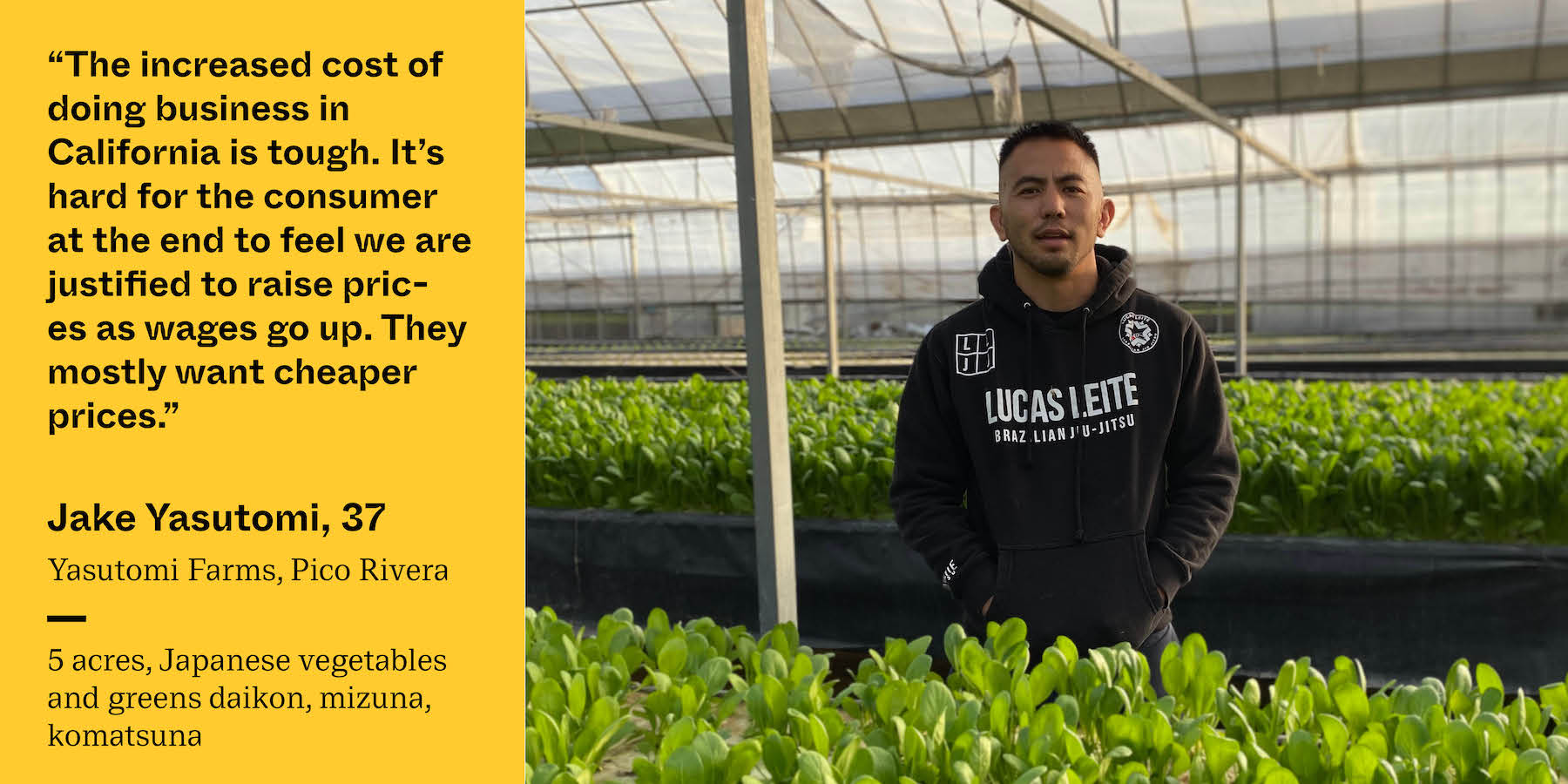
Photo by Yasutomi Farms
Jake Yasutomi, 37
Yasutomi Farms, Pico Rivera, California
- Operates 5 acres of Japanese vegetables and greens (daikon, mizuna, komatsuna).
- Hydroponic, grown in greenhouses, organic pesticides as needed, hydroponic fertilizer.
Yasutomi Farms has sold Japanese vegetables at farmers’ markets and wholesale for over 25 years. Jake Yasutomi took over the farm from his father in 2018.
“The increased cost of doing business in California is tough. California passed a new minimum wage of $15 an hour; it starts at $12 an hour and increases every six months or year. It’s hard for the consumer at the end to feel we are justified to raise prices as wages go up. Customers don’t care about the higher cost of business, they mostly want cheaper prices. And it’s hard to compete when your competitor (in a state with lower minimum wage) is paying 10 percent of what you pay for labor.
“At one point we had six guys working here, but went down to two; one guy quit and it was hard to find someone to replace him. After a while, we just had to change what we plant so it’s not as labor intensive. Japanese cucumbers used to be our main crop, but they take a lot of labor to grow and you have to pick every day. I switched from that to komatsuna. We don’t make as much but the required labor isn’t as much.
“The increased cost of doing business in California is tough. It’s hard for the consumer at the end to feel we are justified to raise prices as wages go up. They mostly want cheaper prices.”
“We grow our crops in greenhouses. With greenhouses, you make money in the winter. There were times when we get a really cold winter, and then our whole cucumber crop got frost damage and we had to start all over. Three months of work go down the drain and there’s nothing to pick, but you still have to pay your workers. It’s high risk, high reward. With more employees, it’s more stress to produce.
“We are not organic because there is no organic way to process nitrogen for hydroponic systems. Until that happens, we cannot be certified organic.”
Kevin Laughlin, 29
K&K Ranch, Orosi, California
- Operates 20 acres plus 40 leased acres, including red walnuts, sundried raisins, stone fruit, grapes, pomegranate.
- No pesticides or sprays.
Laughlin’s family has operated K&K Ranch for 40 years. Laughlin took over the business about one year ago.
“I don’t really believe in certified organic. I try to educate people that organic doesn’t mean that you don’t use pesticides. You should be asking, do you use pesticides, not whether you’re organic because organic farms can still use pesticides, just a different chemical. I’ve noticed that customers at farmers’ markets care less about the stamp of organic and more about pesticides, and if you do spray, what do you use.
“Labor is a big issue for me right now, with immigration laws and everything changing. We now have to pay more for labor, and that’s affected us tremendously because I can’t afford to hire somebody to help me. It’s too expensive, and I’m so small that I can’t afford it. It’s made it harder for me to be able to run the business; to run a social media page, contact chefs, do all those things.
“With the younger generations, nobody wants to do hard labor. A lot of the older farmers that are retiring, their kids don’t want to take the farm over, or they just don’t have any buyers so you’ll have a big company like Paramount come in and buy a small farm. And that makes it worse for me, who’s trying to make it, because now you have a bigger company who’s buying more land.
“I can’t afford to hire somebody to help me.”
“Water has been an issue for years. During the drought, water prices were terrible. That’s partly why the price of nuts increased so drastically. It got more expensive for us farmers to grow and have a yield with walnuts, and when water prices get raised we have to charge more.
“Grants for small farmers would probably help. I know there are some, but maybe expanding the type or amount of grants that the government offers agriculture and farming. Like, depending on how many acres you own or what kind of trees you plant, maybe you get your water cheaper. I don’t know how they’d do it.”
Robin Smith, 65, Marguerita Smith, 30
Mud Creek Ranch, Santa Paula, California
- 60 acres of citrus, avocados, figs, and pomegranates.
- Certified organic.
Robin Smith and her husband started Mud Creek Ranch in 1985. Her daughter, Marguerita, grew up on the farm.
Robin: “We’re certified organic. It’s been 20 years since we did the certification, and in that 20 years, the big companies have taken over. Now to us, it doesn’t mean anything anymore.”
Marguerita: “We still practice organic farming, but the idea of what it means to call yourself organic is not what it used to be, because of lack of regulations and laws. If you go to a grocery store and something’s labeled organic, if it comes from a foreign country, then the regulations are completely different, not the same as U.S. standards. It’s not organic, even though they get to call it that.”
“Some government jobs are unnecessary: There is someone to check the trees for bugs and then someone else to check the soil for bugs. Put a moratorium on new government entities that check up on us.”
Robin: “The big guys are the ones growing all the vegetables in Mexico that they can label whatever they want, and they bring them across the border. It’s really frustrating to have the big guys take the name. It hurts everybody because, what did they pay their workers? We pay our guys that work for us a living wage. And what do they pay in Mexico? It’s maybe living wage for down there, but not here.
“We lost over a third of our orchard in the Thomas fire in 2017. We’re in subsistence mode now, until the trees recover. Before the fire, we were transitioning anyway to plant more drought-tolerant crops: pomegranates, figs, and more tropical things that are more resistant.”
Marguerita: “Some government jobs are unnecessary: you could have one person come out to assess the farm, but instead, there is someone to check the trees for bugs and then someone else comes out to check the soil for bugs. Put a moratorium on new government entities and regulations that check up on us.”
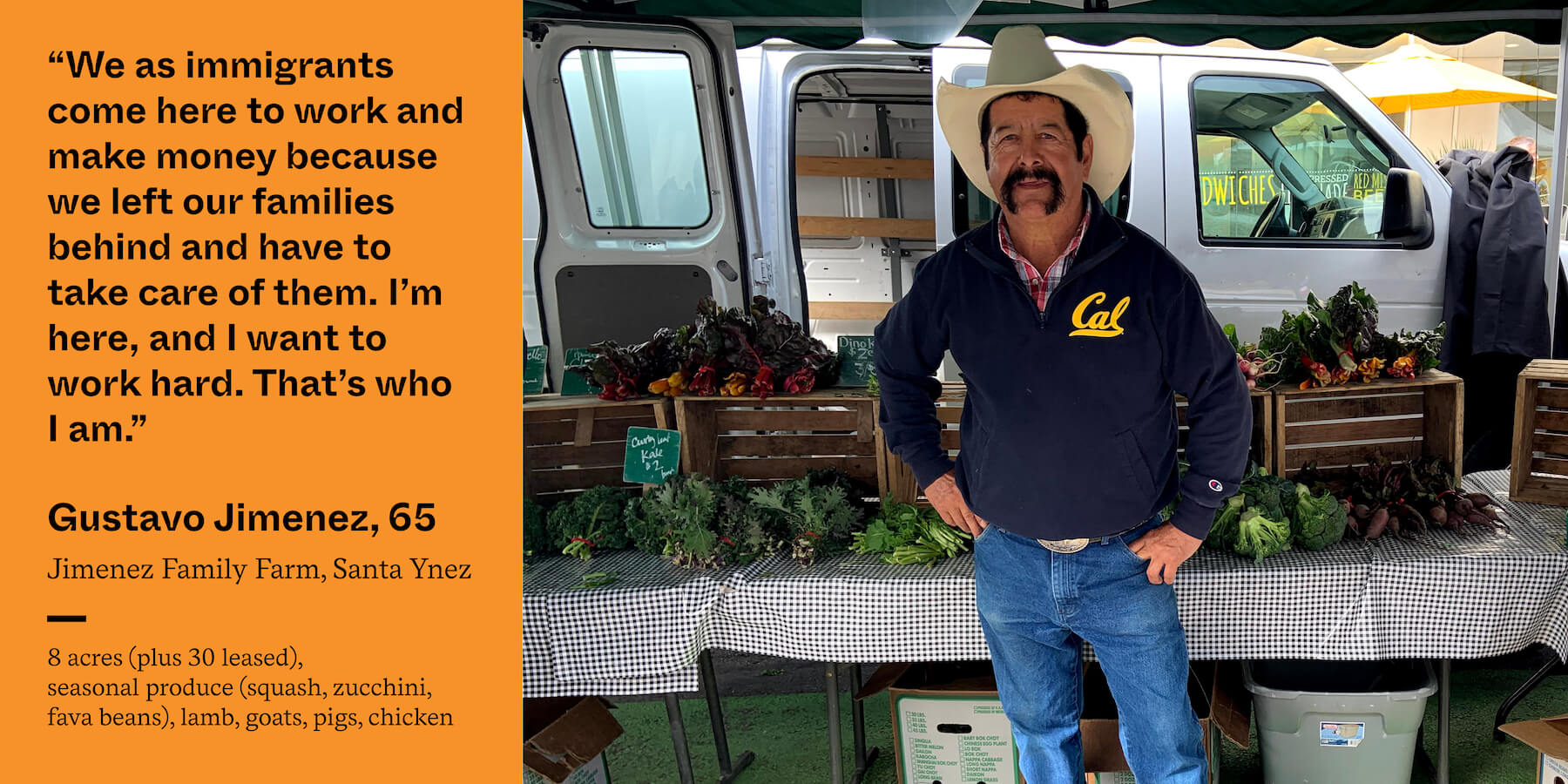
Photo by Mackie Jimbo
Gustavo Jimenez, 65
Jimenez Family Farm, Santa Ynez, California
- Operates 8 acres, plus 30 leased, of seasonal produce (squash, zucchini, fava beans), lamb, goats, pigs, chicken.
- No pesticides, sprays, or synthetic fertilizers.
Jimenez, a first-generation farmer who immigrated from Mexico, has been in business for 25 years. The majority of the farm’s sales are at farmers’ markets, with some wholesale and distribution to restaurants.
“I came to the U.S. from Mexico in the 1970s. I worked really hard to get where I am. I came to the Santa Ynez area because my brothers were situated there. I started working as a dishwasher, and whatever jobs I could get in the beginning. Then I got into construction and worked in construction for 20 to 25 years. After that, I bought my ranch and switched to farming.
“For the last three to four years, it’s been more difficult to find workers. The people who live here a long time don’t want to work because they become spoiled. We as immigrants come here to work and make money because we left our families behind and have to take care of them. I’m here, and I want to work hard. That’s who I am.
“We as immigrants come here to work and make money because we left our families behind and have to take care of them. I’m here, and I want to work hard. That’s who I am.”
“The weather has been unpredictable. It’s been a little worse in the last couple of years because the weather doesn’t only have one pattern like it used to. It’s been hot, then it’s been cold, and then the plants don’t know what to do—whether they should go to sleep or stay awake. Plants are just like humans.
I’m going to change the way I plant because I can’t predict the weather like I could before. Now, sometimes it gets cold earlier or stays hot for longer, so it’s hard for me to predict when to throw seeds in the ground.”
Sunny Stone, 27
J. Davis Farms, Fallbrook, California
- Operates 17 acres of avocados and citrus.
- No sprays, pesticides, or commercial fertilizers.
J. Davis Farms started about 30 years ago. Stone grew up helping out on the farm and has taken a more active role in the last 10 years.
“One issue is water. The two farms next to us are hundreds of acres each, and they both deplete as much water as they want. And there’s no regulation. I am a small farm and I want some of this water too, and I’m being conscientious. As of last year, the aquifer was pretty low, down to 50 percent. But after the rains last year, we went back up to almost 80 to 90 percent.
“We’ve never had heat waves like this before.”
“It’d be nice to have more regulations on water, people and aquifers. Or not necessarily regulations, but if people had some sort of knowledge or better understanding of what’s going on with the aquifer. That scares me. You can’t really grow avocados using city water, it’s not feasible. The only way is to have an aquifer, but to keep people from over-sucking water and have a balance. Say, ‘You could use this amount of water if you have a certain amount of acres, but you shouldn’t be able to use more.’
“We’ve never had heat waves like this before. In the last five years, we’ve had two times where it’s gotten above 120 degrees. And it’s also snowed—our frost line used to be about where our house is and it’s raised almost 15 feet, which is bad for our avocado trees. We’ve installed different sprinkler systems and tried to regulate our water, so we have an understanding of how much water is going on the tree, and how much we’re going to need in preparation for when we see the heat coming. And for the cold, we were putting in lights above the trees and trying to keep it warm. We’re planting more frost-resistant crops, like fig trees and Eureka lemons.”
Jacob Finley, 29
Drake Family Farm, Ontario, California
- Operates 6 acres of goats, goat cheese.
Dan Drake, a veterinarian, took over a defunct dairy in Ontario in 2010, bringing goats from his family’s goat dairy in Utah. Finley is a cheesemaker at the farm and sells at farmers’ markets, though the farm also fills online orders.
“We are a certified-humane farm, which is a third party that’s USDA recognized; it’s about a year-and-a-half long process.
“Ontario and Chino are a very traditional dairy area. A lot of California dairy work was there, especially starting in the 20s and the 30s. In the last 10 years it’s been a huge change in both those cities. A lot more development, fewer and fewer farms. People have decided they’d rather have kind of suburban developments versus farms—ours is the only farm I’ve been to where there’s a Starbucks almost kitty-corner.
“And definitely changing demographics, which to some extent actually predates this farm being there. It’s not a brand new thing.
“People have decided they’d rather have kind of suburban developments versus farms—ours is the only farm I’ve been to where there’s a Starbucks almost kitty-corner.”
“Weather? Not enough of a change to affect the animals. The Nubians are a bit more heat tolerant; the Saanens are a Swiss breed, and if heat waves were really bad it would be harder on them. We do our best to make sure we have fans going, and mist, to keep the goats comfortable.
“And we’re on a well, but we still try to be sparing with anything we pull out, water-wise. But the aquifers are all connected underground, so if our neighbors weren’t being sparing there’s always the chance they’re pulling water from our aquifer, and if the level goes down it affects us. But in a weird way we’re lucky—there aren’t a lot of farms around us, so there’s less being pulled out.
“With any kind of agriculture there’s always the anxiety of, it’s working now but something could come around the corner and have it not work. Obviously any regulation just adds, takes away from the bottom line of the farm. That’s not unique to us, and not even just dairy, it’s the same with vegetable sellers and fruit sellers. The idea that we could be impacted by any kind of regulation. We just try to be aboveboard on everything, and go the extra step.”
Chris Cadwell, 62
Tutti Frutti Farms, Santa Rita Hills, California
- Operates 350 acres of seasonal produce (heirloom tomatoes, winter squash, peppers, greens, carrots).
- Certified organic.
Cadwell, a fifth-generation farmer, started Tutti Frutti in 1988. The majority of its sales are wholesale.
“We were always organic. When we started, it was the beginning of the organic programs. As soon as we could, we became certified. It is a lot of paperwork, but it’s necessary. There has to be some explanation of what you’re doing and certain guidelines.
“If all farmers were playing on the same playground and not taking money you’d probably say goodbye to half of them. Subsidies should stop.”
“We are getting more erratic weather patterns. We’ve had several extreme heat waves that cook your vegetables, like tomatoes will be sun-scalded or peppers will burn. We are starting to grow more plants, like corn or sunflowers, so plants beneath them will have more shade. Last year, we had a rainy year. Prior to that, it was a seven-year drought. I looked at every year as maybe this was my last year, and I really had only one more year if it didn’t rain.
“I don’t believe in the farm bill system. I don’t think any farmer should be granted anything other than if there was a severe tragedy. We’ve never taken government agency money. I strongly feel if all farmers were playing on same playground and not taking money, you’d probably say goodbye to half the farmers in America, who I don’t consider real farmers if they are taking money from the government not to grow things, or for growing too much. Subsidies should stop.
“There are less immigrants coming up to work. But last year, we tried the H-2 visa program, in which people from Mexico are allowed to come up and work on different farms if you supply them with housing and transportation. It was actually a great program. People are allowed to work for let’s say six months, and then go back to their families. We brought up 15 people and I want to bring the same guys back this year.”

